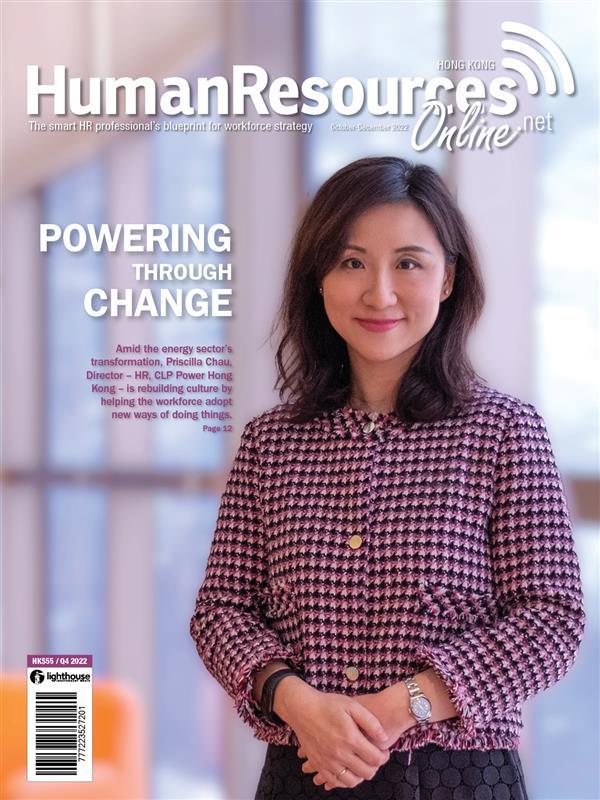Follow us on Telegram and on Instagram @humanresourcesonline for all the latest HR and manpower news from around the region!
share on
Leaders will have to address the widening scope of employee expectations, while flexible benefits will likely become mainstream, identifies Amanda Gervay, SVP, HR Asia-Pacific, Mastercard.
The intensifying talent war amidst phenomena like the Great Resignation and emigration wave has posed challenges for HR professionals to recruit and retain top talents. This is why supporting employees holistically - not only for financial wellness, but also career development as well as physical, emotional and social wellbeing - is a way to engage new, existing, and return-to-work employees.
In this episode of the HR in 2023 series, Amanda Gervay, Senior Vice President, Human Resources Asia-Pacific, Mastercard, reveals the trends and strategies to navigate the world of work in the new year, where she believes leaders will have to address the widening scope of employee expectations, and flexible benefits will likely become mainstream in the future.
Don't miss her insights here.
Compensation and benefits (C&B)
It is widely acknowledged that the employer-employee relationship has evolved during the pandemic. As such, supporting employees’ physical, emotional, financial, and social wellbeing, especially in times of crisis, is today recognised as an integral element of an organisation's offering.
As the corporate emphasis on supporting employee needs increases, leaders will have to address the widening scope of expectations. To that end, flexible and customised rewards will likely become mainstream in future. Organisations should aim to offer a wider array of benefits and allow employees to choose the benefits that are most relevant to them.
Recruitment and staffing
The war on talent is fiercer than ever. Organisations have to consistently review and re-define their approach to onboarding new employees to ensure that the journey from interview to day one and beyond is firmly aligned with the company’s brand and culture.
As competition for talent increases, it is essential to firmly engage the attention of the new joiner even before the job officially begins.
This is where robust pre-onboarding and on-boarding execution matters. We have a dedicated shared services team that keeps in regular touch with pre-joiners to assist them with completing various activities, along with personalised touch points to keep potential new hires engaged.
Learning and Development (L&D)
Our global return-to-work programme has been designed to enable experienced mid-career professionals to return after a career break of two or more years. It provides returners with a range of resources to support them every step of the way and help them integrate into the organisation.
From the start, they are given opportunities to work on key projects and initiatives, enabling them to expand on their skills and prior experience. They receive on-the-job training, coaching, and opportunities to learn about our business, while developing new and existing skills. Upon completion of the programme, based on their performance, participants may be considered for full-time employment.
Employee wellbeing
Moving to work-life harmonisation rather than focusing on work-life balance is one of the biggest employee wellbeing challenges. Even though benefits that promote wellbeing, including the flexibility to determine when and where an individual works, have significantly increased in the past two years, employees report experiencing higher levels of burnout and deteriorating work-life balance.
Managers need to be the stewards of this cultural shift and work with employees to understand their individual expectations and needs, as well as identify potential areas of burnout or disengagement. This will empower employees to design a work mode that is best suited to their unique circumstances and schedule.
Organisations, on the other hand, have a unique opportunity to focus on wellbeing metrics as a leading indicator of their employees’ engagement and productivity. They should start tracking these metrics using engagement scores, wellbeing surveys, utilisation reports, absenteeism, and more, to understand if the working environment allows talent to perform at its best. Tracking these metrics will also create more direct organisational accountability for employee wellbeing, reinforcing the idea that wellbeing is valued throughout the organisation.
This article first appeared in the Q4 edition of Human Resources Online's Hong Kong e-magazine. View the e-magazine here, where you'll find power-packed features and interviews with leaders from Hong Kong, Singapore, Australia, the UK, India, and more!
Image / Provided
share on



